
With the recent news about the RIPE NCC running out of IPv4, there have been many media reports about IPv4 exhaustion globally. To help you understand this news better, I would like to share some background information about the Internet number registry system and the status of IP address allocation.
How the Internet number registry system works
The Internet Assigned Numbers Authority (IANA) manages the central pool of IP addresses. The Internet Corporation for Assigned Named and Numbers (ICANN) performs the IANA functions, allocating IP addresses to the Regional Internet Registries (RIRs).
The RIRs then allocate IP addresses to the organizations in their service regions. There are five RIRs in the world; they are AFRINIC, APNIC, ARIN, LACNIC and RIPE NCC.
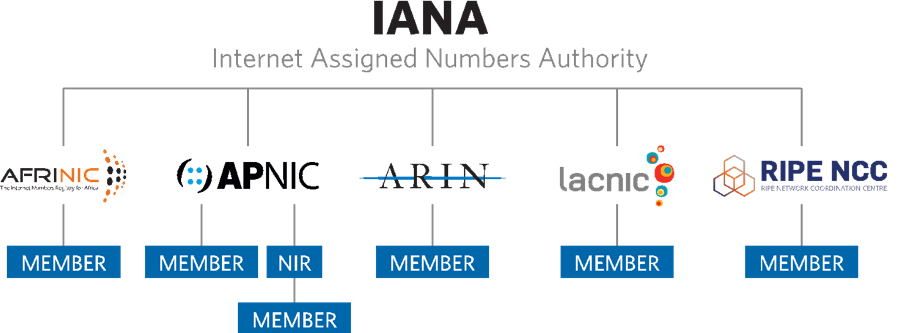
AFRINIC serves the Africa and the Indian Ocean regions. APNIC serves the Asia Pacific regions. ARIN serves North America and many Caribbean and North Atlantic islands. LACNIC services Latin America and the Caribbean. And RIPE NCC serves Europe, the Middle East and part of Central Asia.
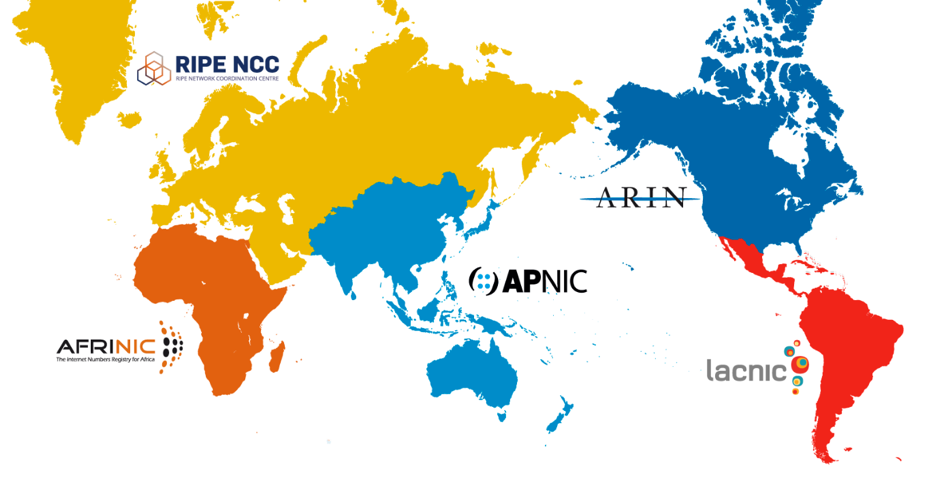
The APNIC and LACNIC regions also host several National Internet Registries (NIRs). NIRs receive IP addresses from their respective RIRs and make further allocations to the organizations within their economy.
Status of IPv4 address allocation
An IPv4 address is 32-bits long, which allows for about 4 billion addresses.
On 3 February 2011, almost 30 years after IPv4 was first deployed, IANA allocated its last /8 to each RIR.
After that, each RIR managed its IPv4 pool according to the policies developed by their respective communities.
APNIC
APNIC serves over 50% of the world’s population. Due to the fast growth of the Internet in its region, APNIC was the first RIR to reach its final /8 on 15 April 2011.
To assist new members in being able to connect to the IPv4 Internet in the years to come, the APNIC community developed a final /8 policy (prop-062), which stipulated that APNIC account holders were able to receive up to a /22 from the final /8 pool (103/8).
A new policy proposal ‘Distribution of returned IPv4 address blocks’ was implemented on 27 May 2014 to allow each APNIC account holder to apply for an additional /22 from the IPv4 recovered pool. This recovered pool was separate from the final /8 and called the non-103/8 pool.
When the recovered pool didn’t have enough space for allocation, APNIC created a waiting list for unmet requests. On 2 July 2019, a new policy proposal ‘Abolish waiting list for unmet IPv4 requests’ was implemented and the IPv4 waiting list was abolished. APNIC no longer allocates additional /22s to members from the recovered pool. Future recovered IPv4 space will be added to the final /8 pool.
From 28 February 2019, the maximum allocation size from the final /8 in the APNIC region was reduced to a /23.
Read: APNIC EC endorses policy changes to IPv4 allocations
At the time of writing, around 18% of the final /8 remains. New members can still request up to a /23 from APNIC at this stage.
RIPE NCC
RIPE NCC was the second RIR to reach its final /8, which happened on 15 September 2012. After that, each LIR in the RIPE NCC region was only able to request a maximum /22 from its final /8 pool.
On 25 November 2019, RIPE NCC made its final /22 IPv4 allocation from the last remaining addresses pool. This is the news RIPE NCC announced recently.
Following this exhaustion, RIPE NCC has created a waiting list for recovered IPv4 addresses. Only LIRs that have never received an IPv4 allocation can now request a single /24 from addresses that the RIPE NCC recovers in the future via this first-come-first-served waiting list.
In addition, a new policy was put in place that increased IXP reserve pool from a /16 to a /15 in October 2019.
ARIN
ARIN received its final /8 from IANA in February 2011. This included the implementation of a policy to reserve a contiguous /10 specifically for use with IPv6 transition services. It also kicked off a four-phase review process and included a team review for requests.
The fourth and final phase was implemented in May 2014 when ARIN’s IPv4 pool reached its last /8 equivalent. In September 2015, ARIN’s IPv4 pool was depleted and ARIN implemented its Waiting List for Unmet Requests. This meant any organization that qualified for IPv4 addresses was placed on a waiting list, in the order of approval, until ARIN had IPv4 addresses to satisfy the request. Note: there were no restrictions on the size block an organization could request.
In January 2019, the ARIN Board of Trustees suspended issuance to the waiting list after observations of misuse were noted. In May 2019, the ARIN Advisory Council made recommendations to the ARIN Board of Trustees to change the maximum block to be allocated to a /22, allow organizations holding a /20 or less to be placed on the waiting list, and reinstate issuance to the waiting list.
An additional item of note: In July 2011, ARIN reserved a /16 equivalent for critical infrastructure. This /16 was expanded to a /15 equivalent in July 2015.
LACNIC
LACNIC has managed its IPv4 depletion in 4 phases.
Phase 0: This phase started in October 2013, having allocated IPv4 blocks until it reached its last available /9.
Phase 1: This phase started in May 2014, having allocated IPv4 blocks until it reached the IPv4 /10 reserved for the soft-landing exhaustion phase.
Phase 2: This phase started in June 2014, having allocated IPv4 blocks until exhausting the /10 reserved for Phase 1. During this phase, only assignments from the equivalent of a /24 to a /22 were made. Requesting organizations were able to request additional resources every six months.
Phase 3: This phase began in February 2017. Only new members are able to receive one initial assignment from a /24 up to a /22.
AFRINIC
AFRINIC was the only RIR to still have large IPv4 blocks after the IANA central pool ran out in 2011.
On 16 January 2017, AFRINIC announced that it was approaching Stage 1 of its IPv4 exhaustion process, during which time it would start using its final /8.
In December 2019, AFRINIC is expected to approach Phase 2, when its pool size is down to a /11. After this time, AFRINIC will change its minimum allocation size to a /24 and maximum allocation size to a /22.
Here is a summary of the available IPv4 address free pool in each RIR as of 5 December 2019.
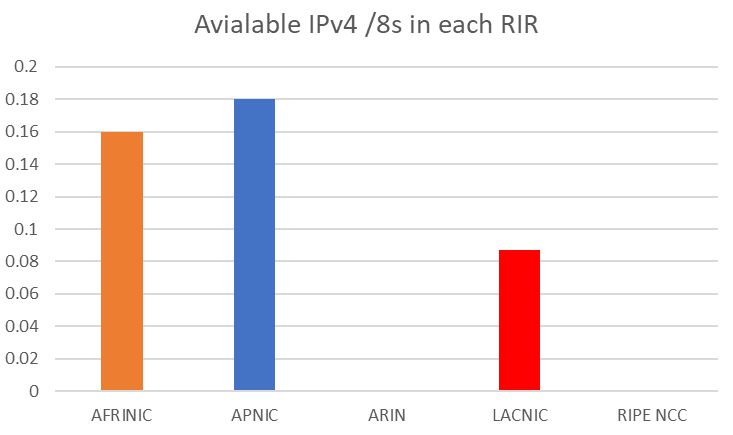
Status of IPv6 address allocation
An IPv6 address is 128 bits long, allowing for 2^128 addresses. It has a huge IP address space and was designed to solve the IPv4 exhaustion problem.

In its early years (IPv6 was first deployed in 1999) IANA allocated /23s to the RIRs. In October 2006, IANA allocated a /12 to each RIR for better aggregation and to apply sparse allocation. Recently, in 2019, RIPE NCC and ARIN have both requested second /12 IPv6 allocations.
Below is an overview of the status of all IPv6 space. So far, we have yet to use 1% of the total space.
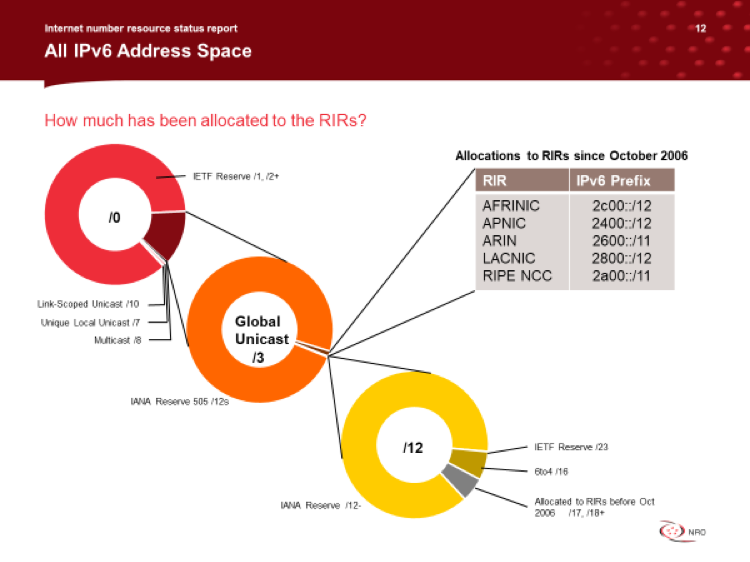
The number of IPv6 allocations from the RIRs has increased a lot in recent years along with IPv4 depletion. Here is the chart to show IPv6 allocations from RIRs since 2008.
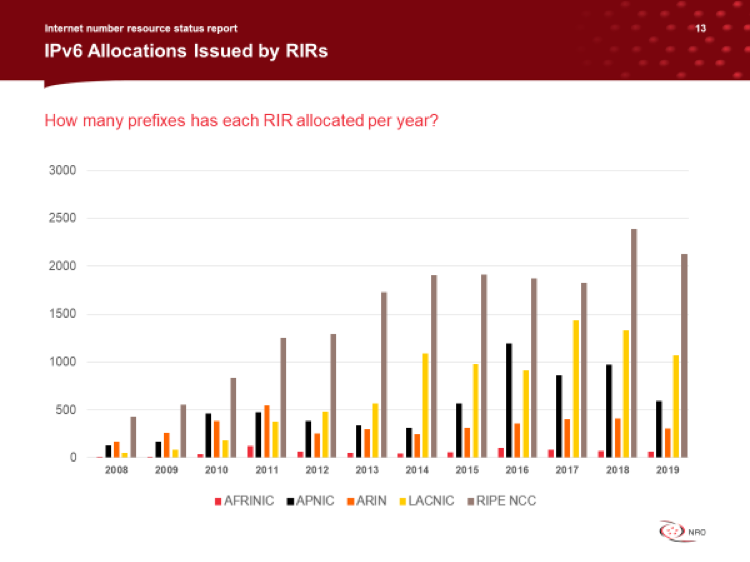
What next
The recent news of RIPE NCC totally exhausting its IPv4 addresses is a reminder that IPv4 is running out. While APNIC and other RIRs still have IPv4 addresses to allocate to new members, this too will soon run out. If you deploy new networks, please consider using IPv6.
The views expressed by the authors of this blog are their own and do not necessarily reflect the views of APNIC. Please note a Code of Conduct applies to this blog.
